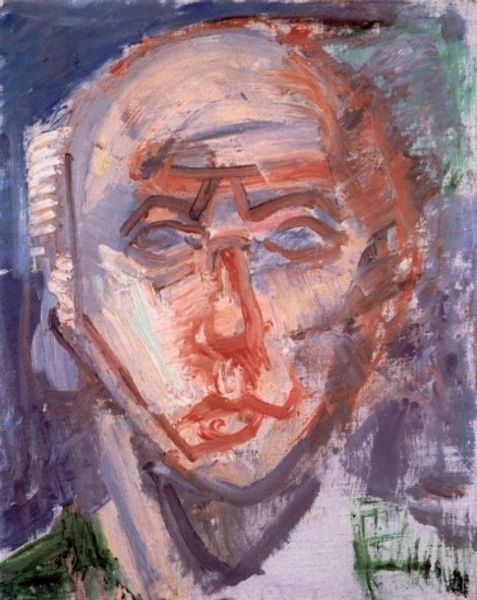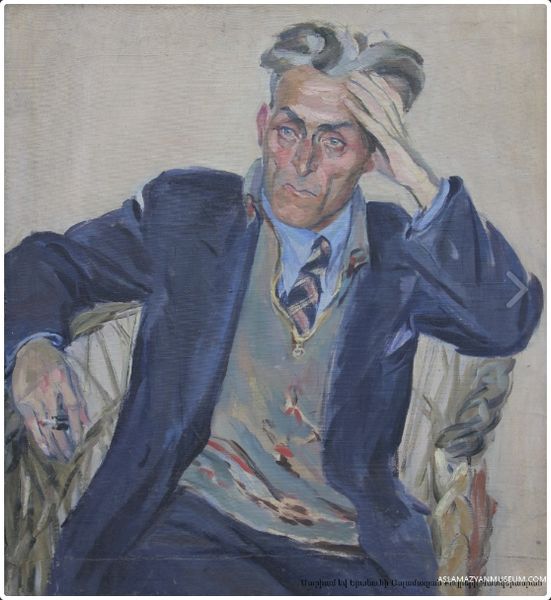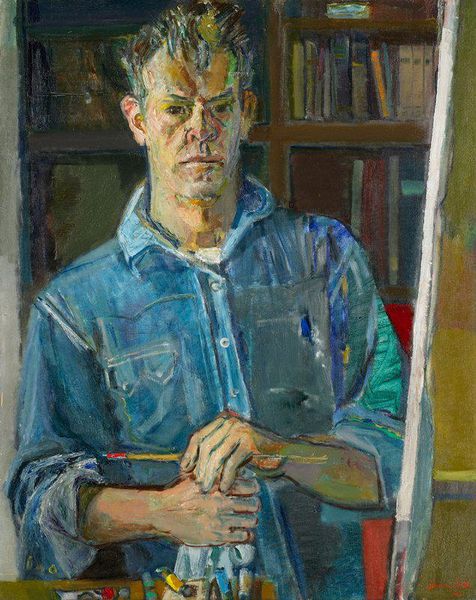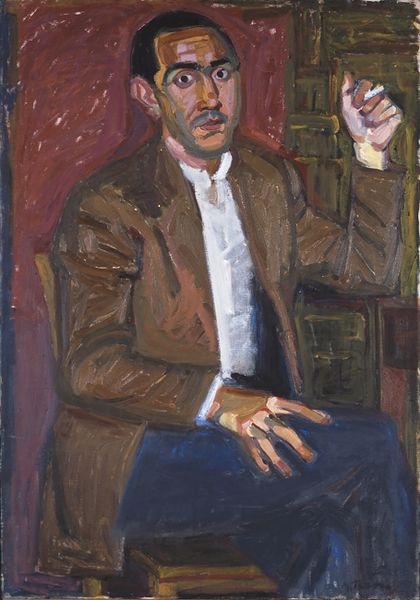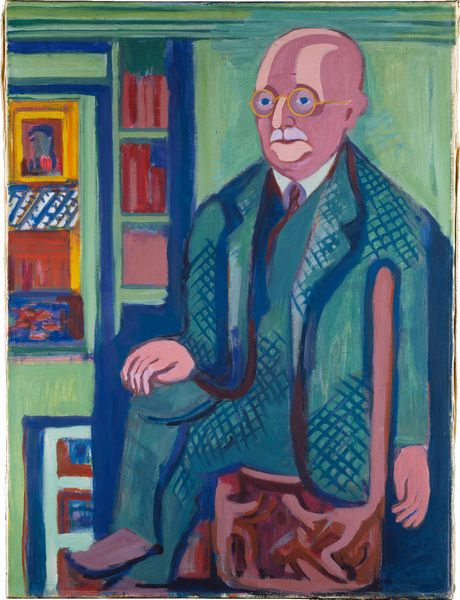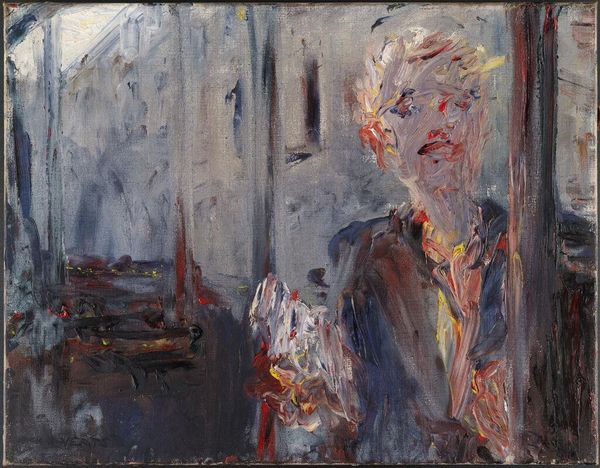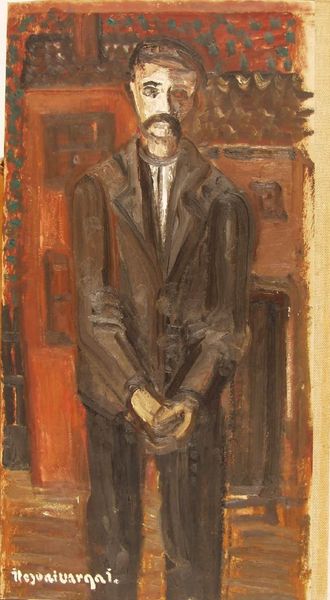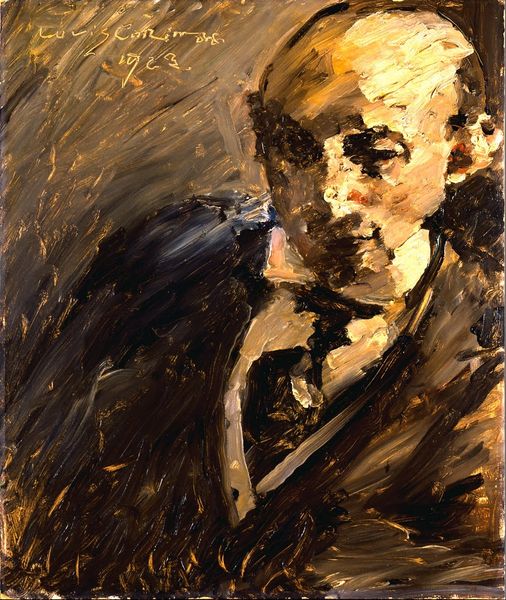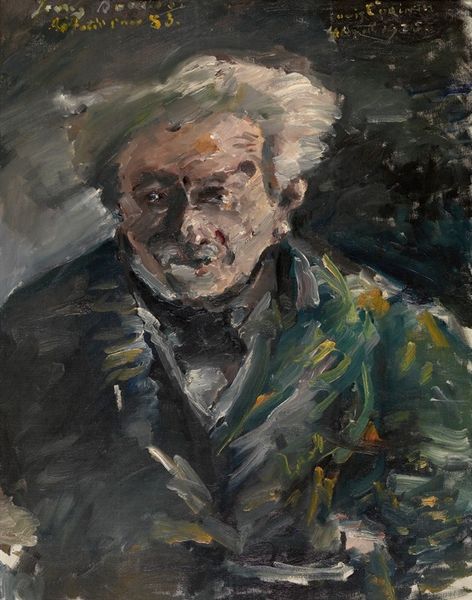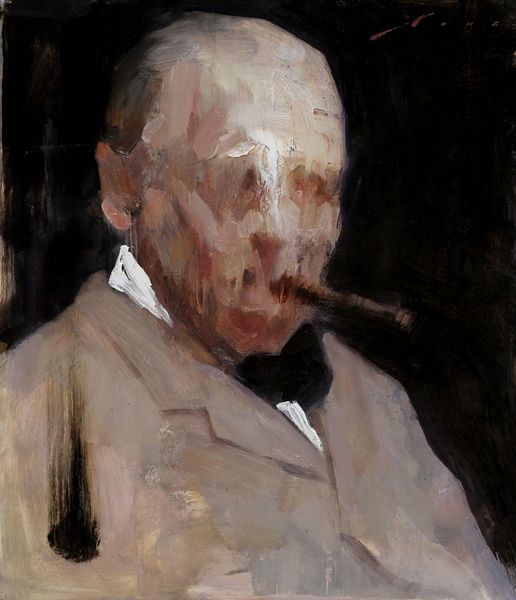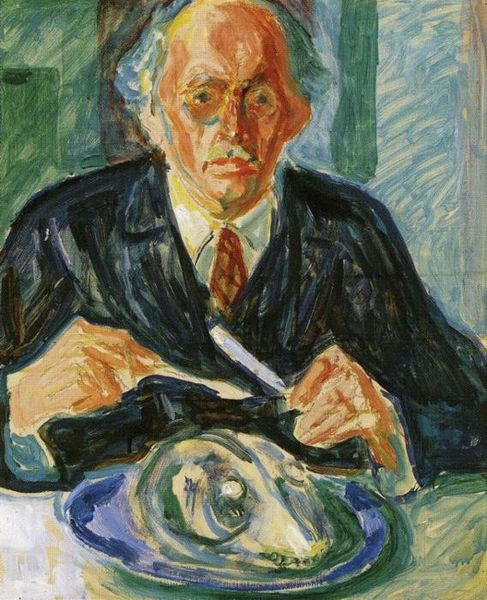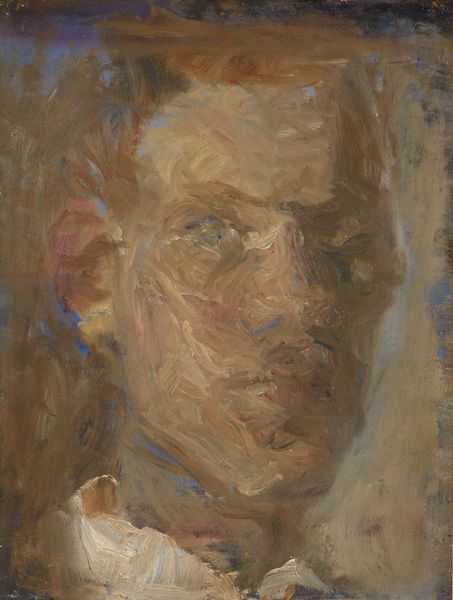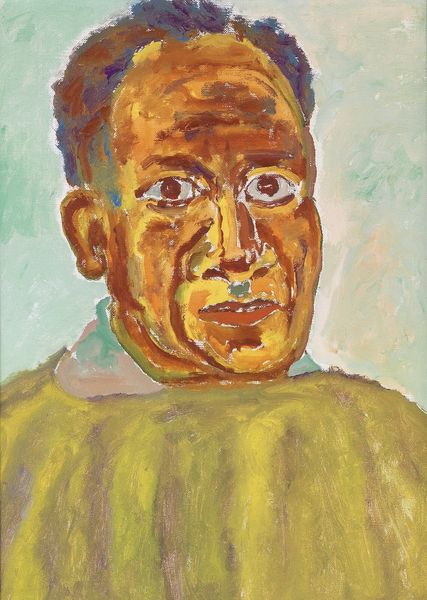
Copyright: Public Domain: Artvee
Editor: Here we have Sasza Blonder's "Portrait of a Man in Glasses," created in 1936 using oil paint. There’s something about the swirling brushstrokes and the subject's intense gaze that feels…almost unnerving, yet strangely compelling. What do you see in this piece? Curator: It is unnerving, isn’t it? The eyes, magnified by the glasses, draw us in, demanding a response. In Expressionist portraits such as this, artists used distortion and exaggeration not simply to represent the subject, but to convey inner psychological states. What feelings do the colors evoke for you? Editor: The fleshy pinks contrasted with the cool blues and blacks...almost like a struggle or tension. Curator: Precisely! The tension between cool and warm is a classic Expressionist strategy for depicting conflict. In 1936, on the eve of WWII, what inner conflicts might an intellectual man in glasses be wrestling with, do you imagine? Editor: Uncertainty about the future? Perhaps a fear of the rise of authoritarianism? Curator: Very insightful. The glasses, while signifying intellect, also act as a kind of barrier. They mediate his gaze, creating both distance and intense scrutiny. Do you see any other symbols suggesting internal conflict or external pressures? Editor: I guess the swirling, almost chaotic background could represent the turbulent times? And maybe his formal suit is a symbol of trying to maintain order or composure? Curator: Exactly! The suit as a kind of armor, a mask. Expressionism, after all, delves into the anxieties beneath the surface of appearances. This has definitely made me think about the power of portraiture to communicate broader cultural anxieties! Editor: Me too! It’s so much more than just a likeness; it's a window into a specific time and the human psyche.
Comments
No comments
Be the first to comment and join the conversation on the ultimate creative platform.
